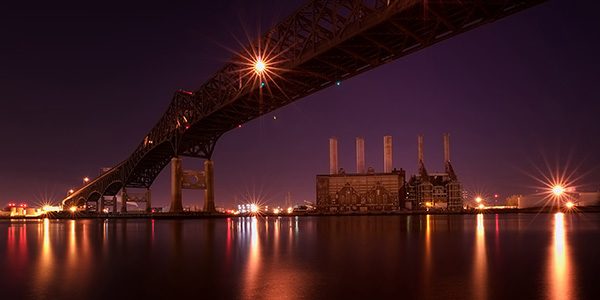
Editor’s Note: The Pulaski Skyway will close some time next year to allow for significant repairs.
I have driven Alpine passes in Switzerland and the hairpin turns of the Norwegian fjords. I have driven one-lane roads in the Scottish isles and a three-lane highway to Budapest. (It was just after the Iron Curtain came down. The middle lane was for passing. Think about it.) I have done battle with the press of pedestrians in Times Square on a Saturday night and found a parking spot on the last shopping weekend before Christmas at the Mall at Short Hills.
I love cars and driving so much that I plan my vacations around spectacular roads with equally spectacular scenery. But if you were to ask me, “What’s your favorite stretch of road in the world,” my answer would have to be the Pulaski Skyway.
Seriously. I think the most wonderful place anywhere to be a motorist is on the Pulaski. I get excited about it every single time. My friends—especially those who have to contend with the Pulaski in their daily commute—think I’m nuts. It’s ugly. It’s crowded. It’s claustrophobic and dangerous, they say. The New Jersey Department of Transportation is officially on their side and has declared the Pulaski “functionally obsolete.” They may all be right. But I love it just the same.
Casimir Pulaski was an 18th-century Polish freedom fighter. He first fought against the Russians and then he came to America and fought against the British in the Revolutionary War. He saved the life of George Washington, who made him a general of the Continental Army. In 2009 he was granted honorary U.S. citizenship (much good may it do him). There are towns named Pulaski in Iowa, New York, Tennessee, Virginia and Wisconsin.
But to my way of thinking, the highest honor ever bestowed upon the general was the 3½-mile stretch of Routes 1 and 9 between Newark and Jersey City that bears his name. It was built to cross the Passaic and Hackensack rivers, and Kearny Point, the spit of land between them. Opened in the depths of the Depression in 1932, it was conceived as the nation’s first superhighway, and the first motorway connecting New Jersey and New York via the Holland Tunnel. Its soaring, 135-foot height eliminated the need for drawbridges.
It’s this last feature that makes the Skyway so spectacular. My favorite detail is that when it first opened, it carried five lanes. The center lane was intended as a breakdown lane, but in practice it is a suicide lane for passing, much like that Hungarian highway on which I once drove. So part of what I love is that frisson of danger—there’s no place to escape. There you are, a big, honking SUV on one side, a lacy metalwork trellis and the 13-story plunge to the water on the other.
And the view! Sure, it’s no fjord, but—day or night—the combination of the glittering water below, the buzz of human activity all around, the giant cranes of Port Elizabeth to the south, and the skyline of our titanic neighbor to the east—it all reminds me in the most dramatic way that no matter how far I roam, I am already a citizen of the best place on the planet.
It is, I admit, somewhat less charming when the traffic grinds to a dead halt. But such is the price we pay for anytime access to this monument to motor heaven.
Ingrid Steffenson is the author of Fast Girl: Don’t Brake Until You See the Face of God, a memoir about her passion for high-perfomance driving. She lives in Short Hills.
